
Alexander von Humboldt
The Invention of Nature
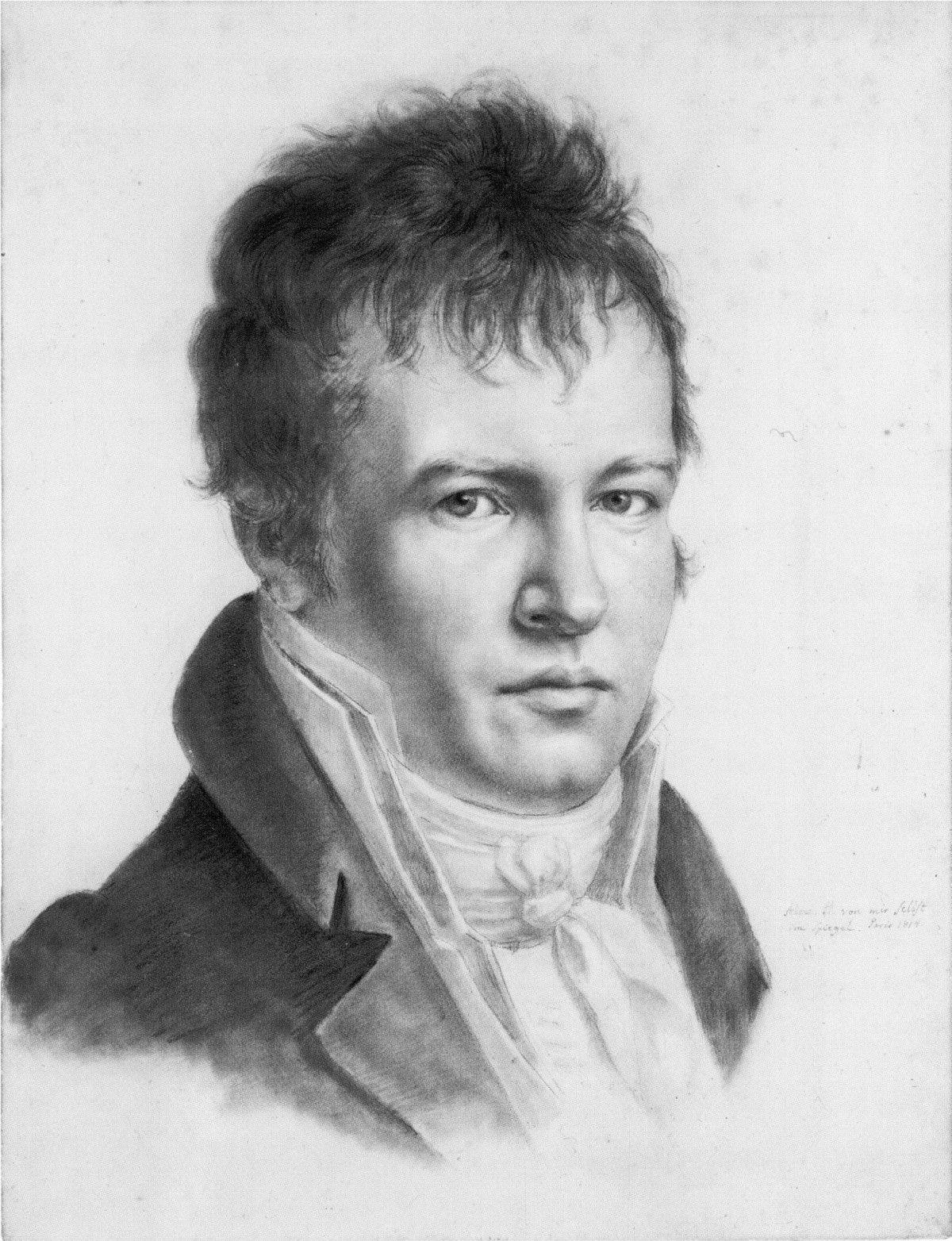
Alexander von Humboldt
Polymath, geographer, naturalist, explorer
Born
1769, Berlin
Died
1859, Berlin
First expedition
Orinoco and Rio Negro
Second exhibition
From Cartagena to Lima
Third exhibition
Mexicos
Alexander von Humboldt, often revered as one of the foremost explorers of the 19th century, embarked on expeditions that spanned continents, with a particular focus on Latin America.
Born in the Kingdom of Prussia in 1769, Humboldt's insatiable curiosity led him to traverse dense jungles, climb mountain peaks, and navigate mighty rivers, all while meticulously documenting the natural world.
One of Humboldt's significant contributions to science was his detailed illustrations of plants. While traveling through diverse ecosystems, he not only documented his observations in writing but also drew intricate images of the flora he encountered. These illustrations served multiple purposes: they were invaluable records of species that might not have been preserved or transported successfully, and they offered the scientific community insights into the diversity and structure of plants from regions previously unexplored by Europeans.
His most notable expedition, a five-year journey across Latin America, began in 1799. Accompanied by the French botanist Aimé Bonpland, Humboldt ventured through modern-day Venezuela, Colombia, Ecuador, Peru, and Mexico. The duo explored regions untouched by Europeans, mapping uncharted territories and cataloging thousands of new species. Their combined efforts resulted in an unprecedented collection of botanical drawings, further enriching the world's understanding of biodiversity.
Humboldt's love for nature was not just limited to observation and documentation. He perceived nature as a vast interconnected web, where every organism had its role. This holistic view of nature was groundbreaking for its time, challenging the compartmentalized scientific approach that was popular then. He stressed the idea that nature was a living entity, with all of its parts intimately connected.
Beyond his scientific contributions, Humboldt's genuine admiration and respect for nature made him an early advocate for environmental conservation. His writings resonate with passionate descriptions of landscapes, reflecting a deep emotional connection to the world around him. Through both his words and his illustrations, Humboldt inspired generations of naturalists, writers, and explorers, leaving an indelible mark on how we perceive and interact with our environment.
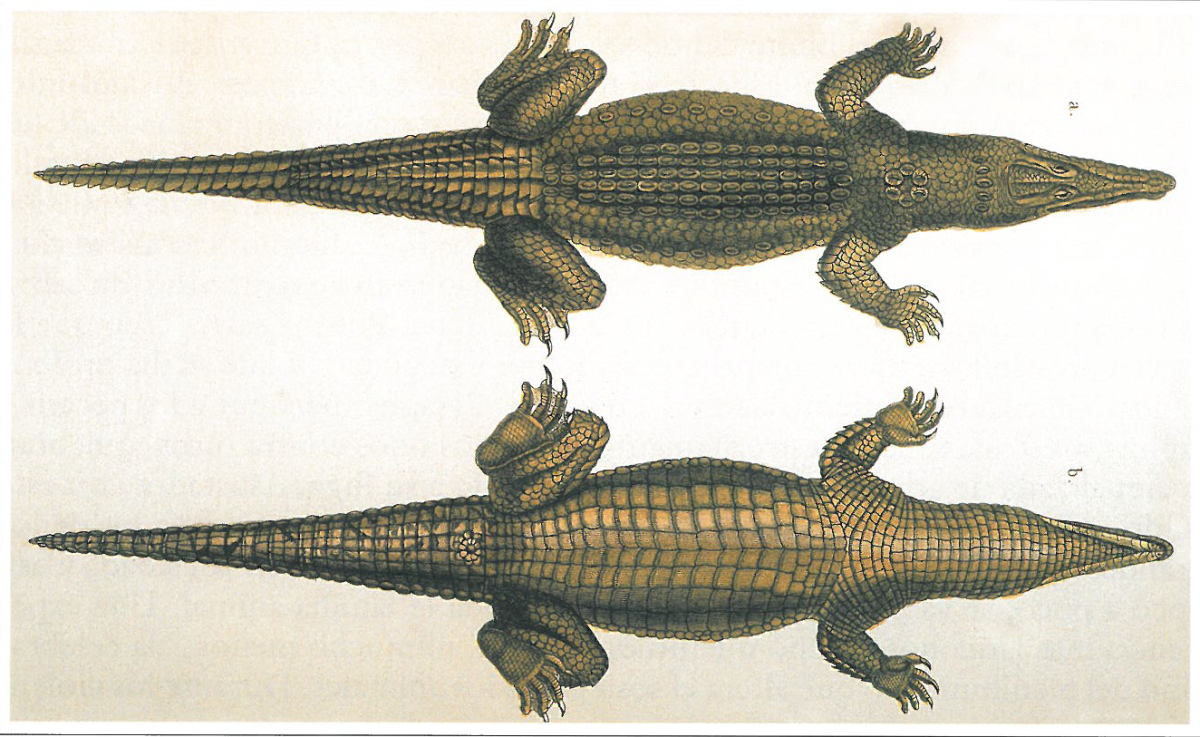
Crocodile illustration from the book Views of Nature
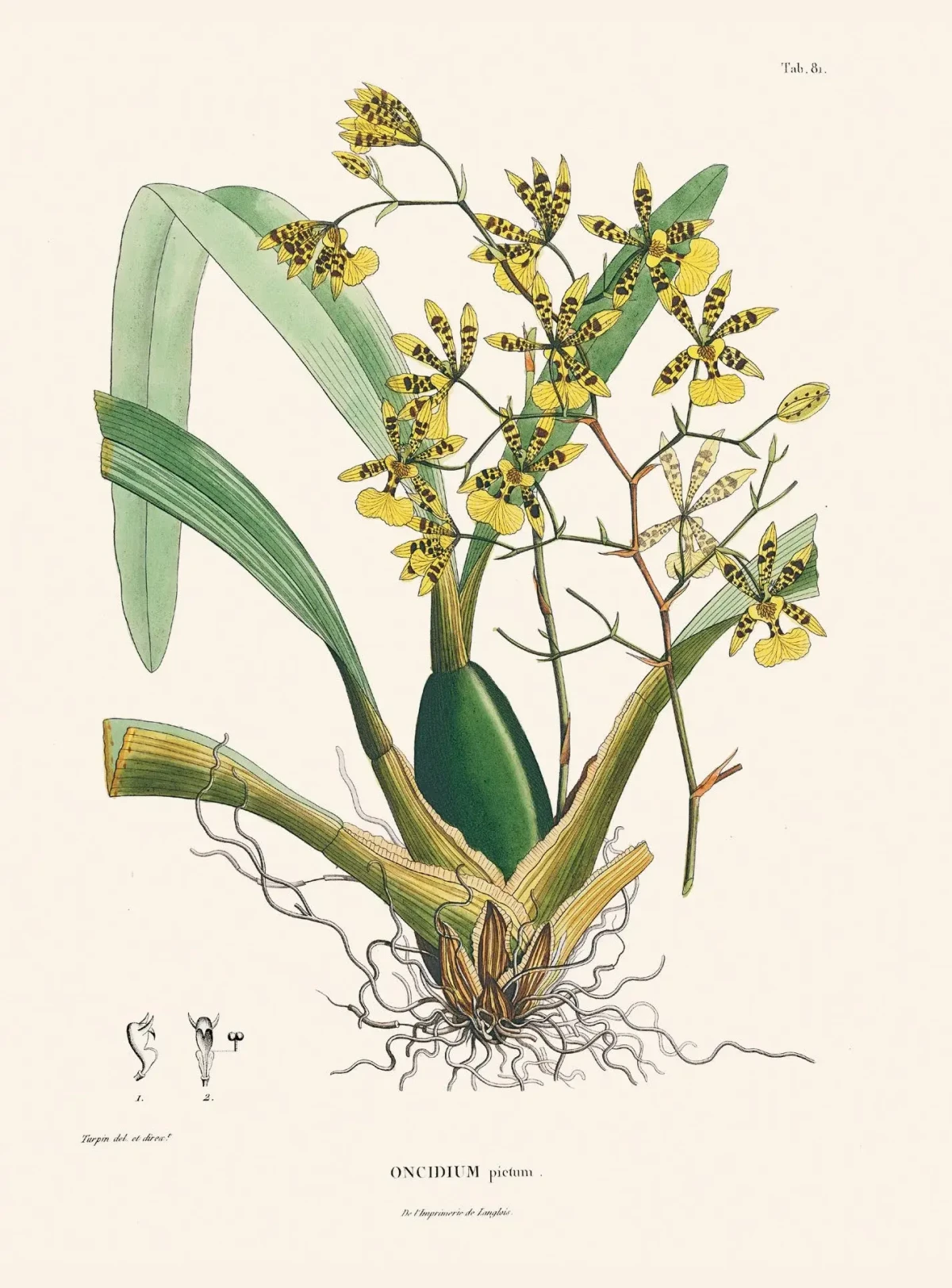
Oncidium pictum
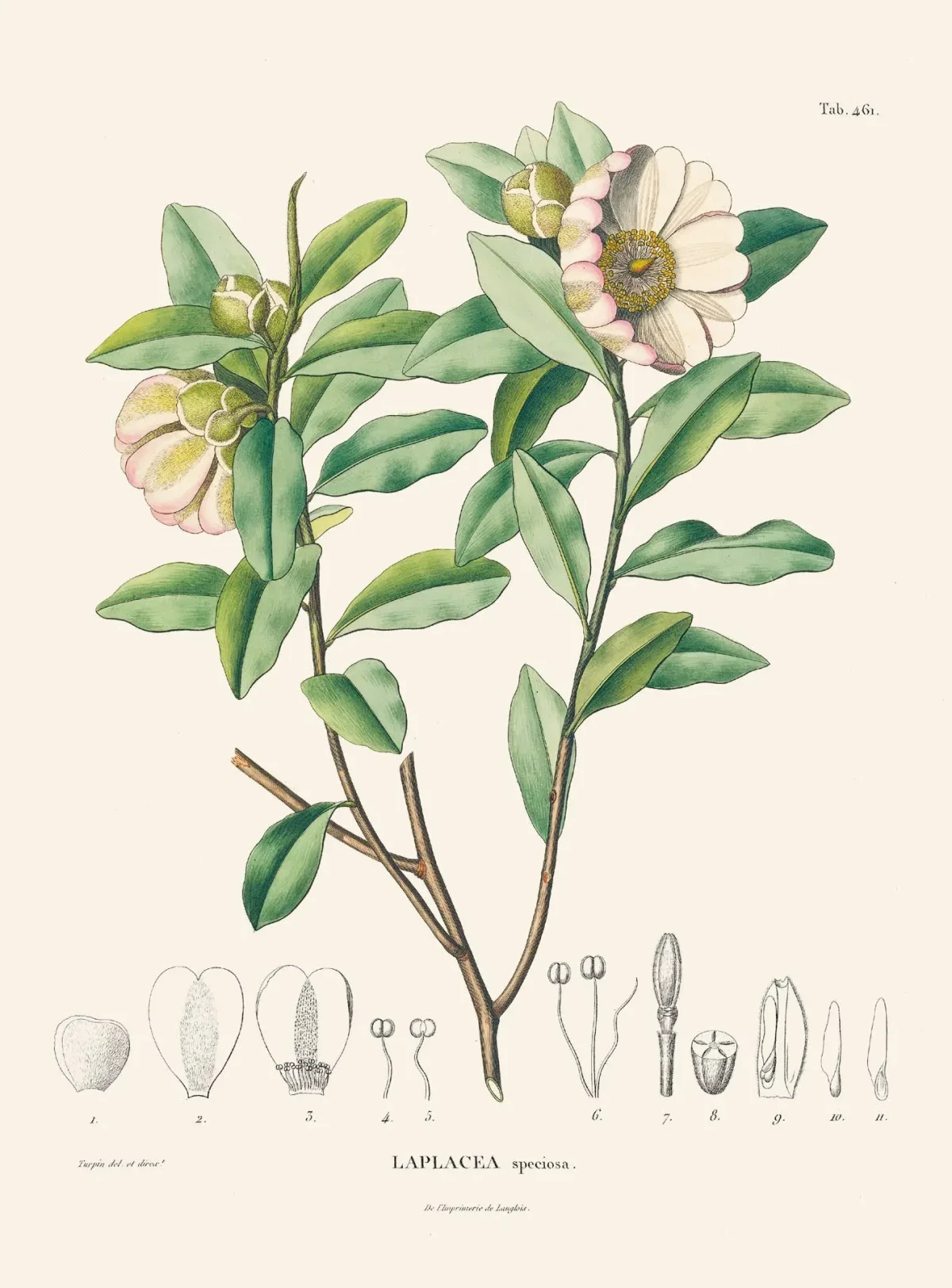
Laplacea speciosa
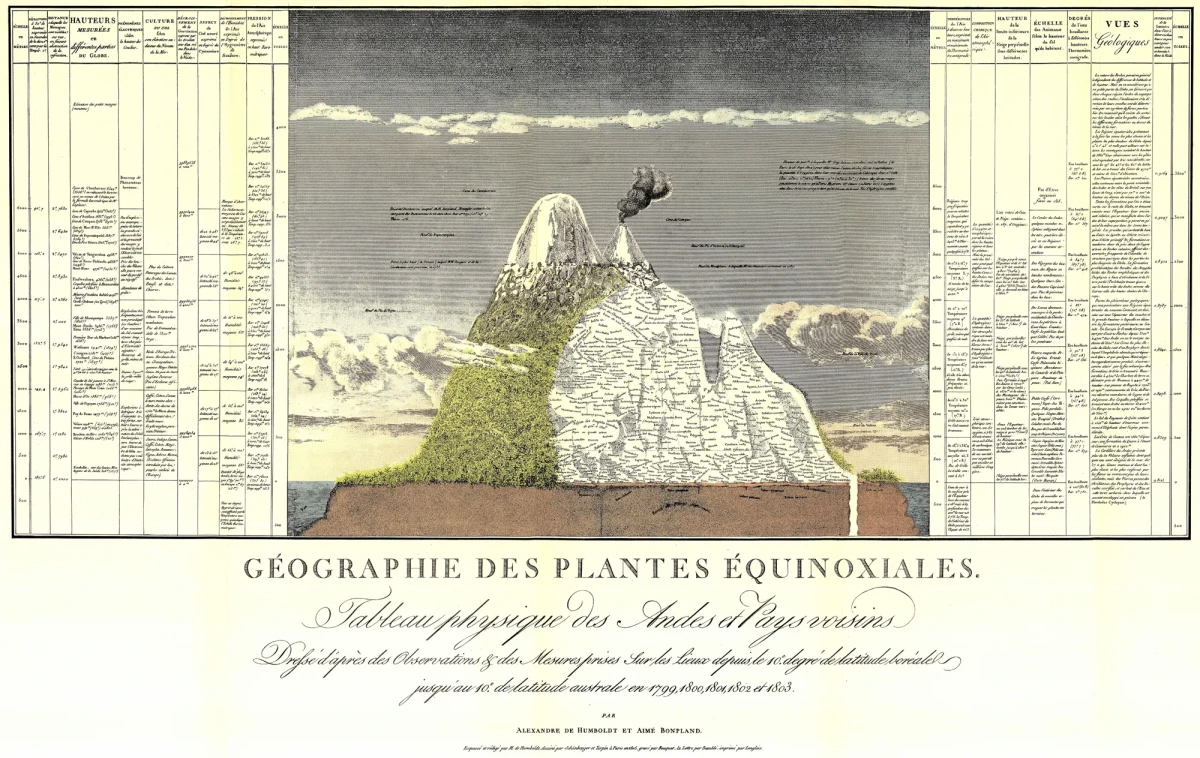
Andes expedition, Mount Chimborazo, Ecuador, 1799
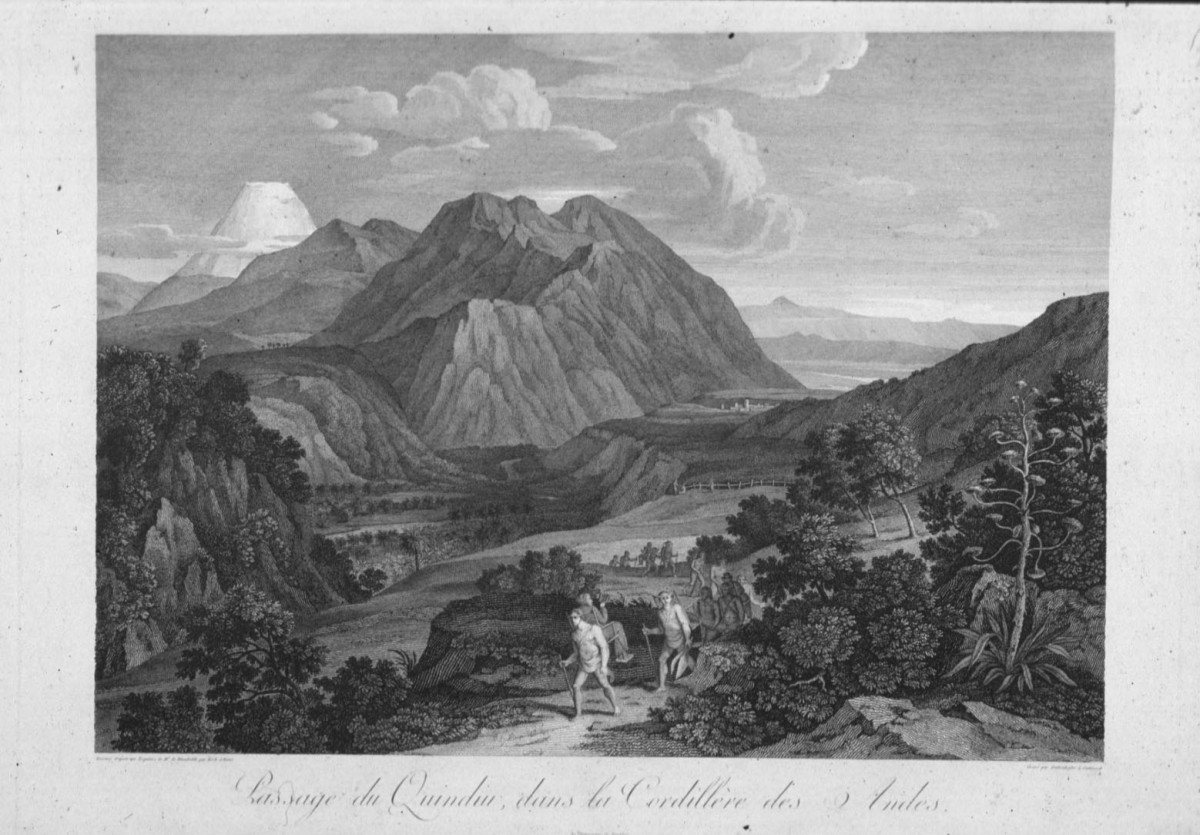
Street over the Quindiu

Geographical Distribution of Plants. Distribution of Plants in a Perpendicular Direction.
